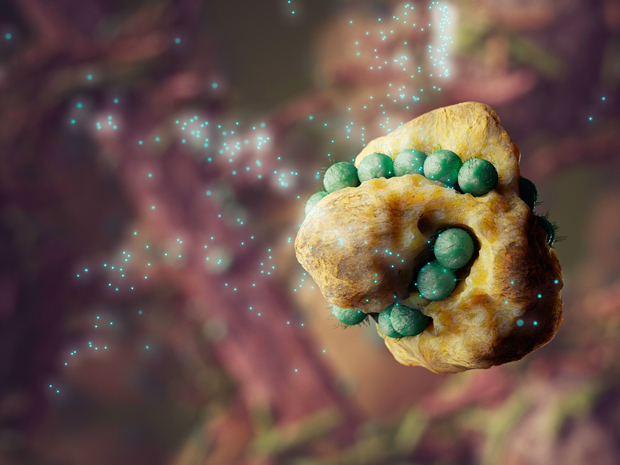
Lights, camera, action
Stunning videos zooming amongst our intestines’ microbial communities and investigating molecular mistakes in individual cancers, developed by the group of EMBL alumnus Sean O’Donoghue, have been selected amongst the world’s top ten science animations in the 2014 International Science & Engineering Visualisation Challenge – the data visualisation equivalent of the Academy Awards.

By Theodoros Soldatos
The films The Hungry Microbiome and Cancer is Not One Disease were produced through the VizbiPlus project, which aims to present inspiring, informative and scientifically-sound animations about recent developments in the life sciences.
“While this effort is primarily geared to help improve how science is communicated, a distinctive feature is that it is not designed only to inform, but also to educate and engage the public,” explains O’Donoghue, who is group leader at the Garvan Institute of Medical Research in Sydney and the Commonwealth Scientific and Industrial Research Organisation. “It is a unique combination of science and art – scientists producing the videos spend the best part of a year to deliver two to three minutes of footage, but most of this time is spent doing science, talking to other researchers, or reading papers. We want to make sure every frame is consistent with what we know is true in science.”
We want to make sure every frame is consistent with [the] science.
The videos, available on YouTube, have been viewed thousands of times by people around the world, and showcased at sold-out events and festivals. “You get insight into what is going on at a scale that is otherwise inaccessible,” O’Donoghue explains. “Take our gut microbiome – we know that many plant foods benefit our health, and through animation we have illuminated in intricate detail the role that the bacteria in our intestines have in this process. It is inspiring to watch and people are captivated by a world they may know little about.”
Animators in O’Donoghue’s groups use tools developed by other team members, such as Aquaria – a new protein structure service that provides a concise visual summary of all related Protein Data Bank structures, simplifying the process of gaining insight into molecular function. Amongst a raft of award-winning projects, his multidisciplinary teams also work on community initiatives such as the Visualising Biological Data (Vizbi) conference series, which aims to raise the global standard of data visualisation.
“Researchers are gathering data at unprecedented rates,” adds O’Donoghue, who has used data visualisation techniques throughout a career spanning both academia and industry. “Humans are driven by vision – we are very effective at looking at complex information and extracting patterns. Advancements in graphics are allowing us to create more complex visualisations – essentially developing a new visual language in which we can communicate, explain and understand science.”


